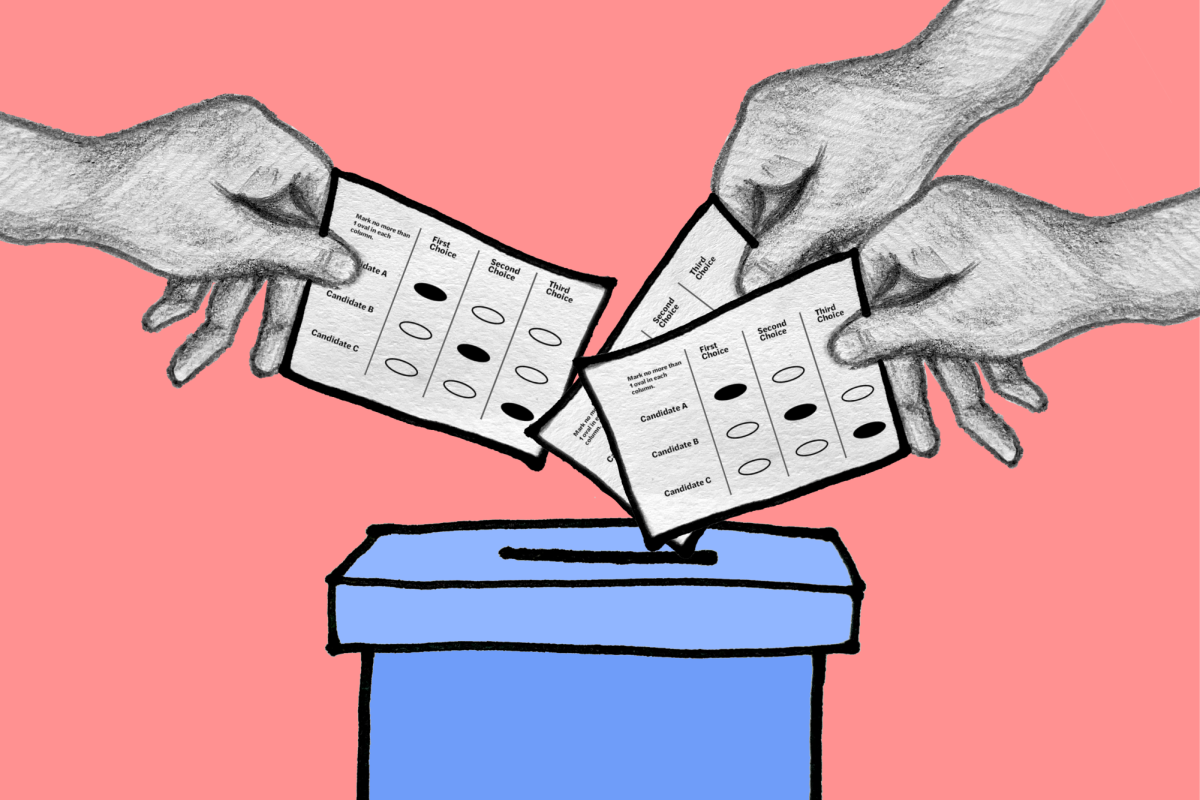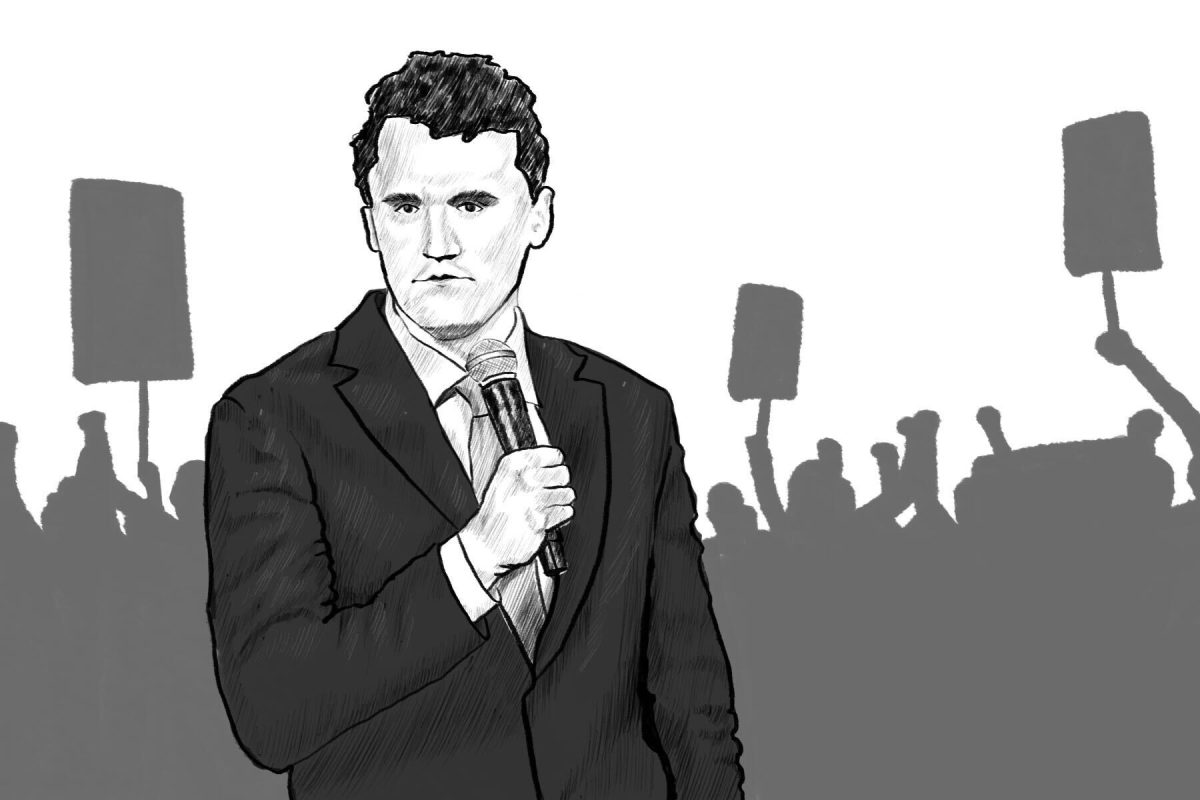In a truly representative democracy, every vote should be counted in a way that reflects the electorate’s intent. While a plurality-rule system — also known as first-past-the-post — is better than no democracy at all, it falls short of delivering a fully representative government. Too often under plurality-rule systems, candidates win elections without majority support, leaving large portions of these electorates unheard. A ranked choice voting system — also known as single transferable vote — offers a smarter and fairer alternative that empowers voters to express their full preferences and ensures that winners have an even greater backing than if they had won under a plurality-vote model. As more democracies confront the limitations of outdated systems, ranked choice voting stands out as a practical reform that brings elections closer to reflecting the true will of the people.
The most damaging consequence of a plurality-rule voting system is the spoiler effect. This occurs when candidates with similar ideologies split their votes, which allows a less popular opponent to win. By allowing a candidate rejected by most voters to win simply because similar alternatives divided the majority, this outcome misrepresents the will of that majority.
Conversely, there is no spoiler effect in a ranked choice system. Candidates with similar beliefs would not have to worry about vote splitting; the candidate who ultimately wins will reflect a broad voter appeal.
Despite its weaknesses, first-past-the-post remains a commonly-used electoral system. Its flaws are not just theoretical; they play out in real-world elections across multiple countries. For instance, in India’s 2024 Lok Sabha elections, the spoiler effect was evident in the constituencies of Raiganj in West Bengal and Bolangir in Odisha. In both constituencies, right-wing Bharatiya Janata Party candidates won without a majority of voters, while the left-leaning parties like the Trinamool Congress Party and the Biju Janata Dal party split the vote with the center-left Indian National Congress Party. This division among ideologically similar candidates ultimately handed seats to the BJP, despite the combined support for progressive parties outnumbering the winner in those specific races.
The spoiler effect doesn’t just occur in a few isolated races; sometimes it can shape the outcome of entire elections. This impact is best exemplified by the United Kingdom’s most recent election. Despite only receiving roughly one-third of the popular vote, the Labour Party secured a near super majority of 412 out of the 650 seats in the House of Commons. While this dramatic victory was partly driven by public dissatisfaction with Conservative Party former Prime Minister Rishi Sunak, that alone does not explain Labour’s net gain of over 200 seats. The dramatic shift in power should be largely attributed to the right-wing Reform Party led by Nigel Farage. By running candidates nationwide, the Reform Party split right-leaning votes with Conservatives. This split cleared the path for hundreds of Labour Party members and Liberal Democrats to win. In fact, the Reform’s presence was so catastrophic for Conservatives that it was the biggest spoiler in over 130 seats. Despite earning roughly 14% of the popular vote, the Reform Party ended with less than 1% of the seats in the House of Commons. The U.K.’s elections are a stark example of how a plurality voting system not only distorts voter intent but also fails to reflect the actual level of support each party has.
What makes a plurality voting system particularly harmful is its inherent inability to capture the full spectrum of voter preferences. It reduces complex political landscapes to a zero-sum game where only the top vote-getter counts, regardless of how narrow their lead may be or how widely disliked they are by the rest of the electorate. This not only marginalizes minority voices but also discourages political innovation. In some cases, this can lock voters into a two-party dynamic where third parties are turned away.
Canada’s recent election showed how strategic voting under a plurality system can sideline third parties and reshape political landscapes. Mere months before the vote, the Liberal Party was deeply unpopular, trailing the Conservatives by over 20%. However, as election day approached, many progressive voters who would have otherwise supported the left-wing New Democratic Party pivoted to the Liberals, fearing that splitting the left-leaning vote would help Conservatives win. These shifts are demonstrated in the public opinion polls where support for the Conservative Party slightly declined, the New Democratic Party completely plummeted, and the Liberal Party skyrocketed to front-runner status. The final result was a Liberal government that holds a strong plurality and the collapse of the NDP.
The sudden turnaround was driven in part by external developments such as President Donald Trump’s tariff threats and annexation rhetoric and Justin Trudeau’s resignation as prime minister. However, strategic voting by many left-wing supporters to ditch the NDP gave the Liberals the final boost they needed to remain as the governing power. If Canada was under a ranked choice model, those progressive voters could have supported the NDP as their first choice without the fear of empowering their ideological opponents. But in the plurality voting system, strategic compromise replaced sincere choice.
Ranked choice voting is a better system than what is currently used by several democracies because it preserves voter intent, encourages sincere participation, and produces leaders who are more likely to reflect the majority’s will rather than the largest plurality. By allowing voters to order their preferred candidates, ranked choice voting removes the fear of “wasting” a vote or unintentionally helping an opposing candidate win. It promotes emerging voices while reducing the incentives of strategic voting. For democracies looking to modernize their elections and better reflect the true will of their people, the path forward is clear. It is time to retire the plurality voting system and give voters the freedom to vote with their heart under a ranked choice model.












Bren • Jun 3, 2025 at 2:48 pm
I agree ranked choice or instant runoff is much better than plurality-rule, but there were some inaccuracies in your article. Ranked choice does have a spoiler effect. For example, imagine a red party, an orange party, and a yellow party. The red party picks red first and orange second, while the orange party picks orange first and yellow second. If the orange party is the smallest, its votes will go to the yellow party, which will win, even though the red and orange parties together are larger than the yellow party and would have preferred the orange candidate. RCV is very resistant to tactical voting, but not completely. It is still much better than FPTP, though.